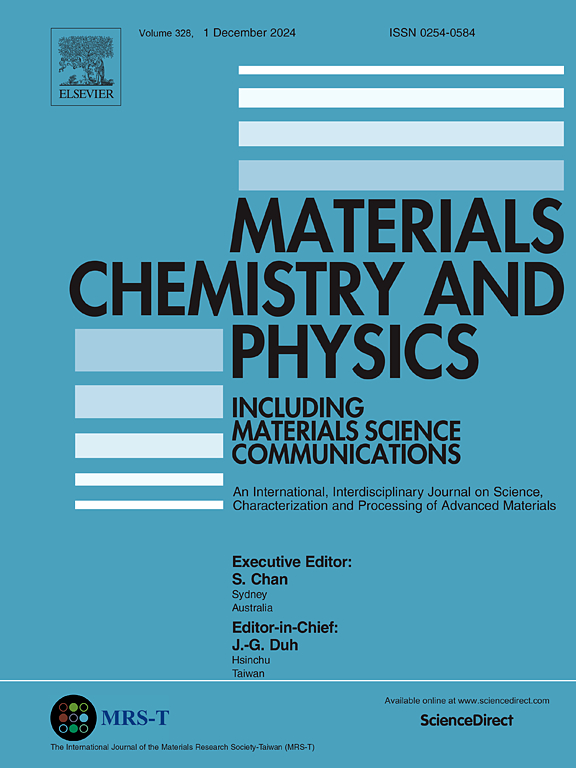Potential application of BC2N nanotube semiconductors in the Li-ion batteries
IF 4.3
3区 材料科学
Q2 MATERIALS SCIENCE, MULTIDISCIPLINARY
引用次数: 0
Abstract
We applied the chemistry model B3LYP-gCP-D3/6–311++G∗∗ for examining the possibility of using a BC2N nanotube (BC2NNT) in lithium-ion batteries (LIBs) as the anode material. The nuclear magnetic resonance spectroscopy calculations revealed that there were two kinds of nonaromatic hexagonal rings (HRs), referred to as B2C2N2 (I) and BC4N (II). The Li cation was observed to be adhered on B2C2N2 and BC4N through different mechanisms including a cation-lone-pair and cation-π interactions, respectively. Our calculations show that the BC2NNT remains structurally unchanged during the adhesion of Li atom or Li+. The Li cation has to over a maximum energy barrier of 13.2 kcal/mol for migrating on the BC2NNT, which led to a diffusion coefficient of 3.26 × 10-10 cm2/s. Consequently, BC2NNT exhibited superior ion mobility, which led to fast rates of charge and discharge. The BC2NNT had an open-circuit voltage (OCV) of 1.92 V, which was greater compare to the OCV of similar nanostructures. All of the aforementioned findings suggest that the BC2NNT is one of the viable anode materials for use in LIBs.
BC2N纳米管半导体在锂离子电池中的潜在应用
我们应用化学模型B3LYP-gCP-D3/6-311 ++G * *来研究在锂离子电池(LIBs)中使用BC2N纳米管(BC2NNT)作为阳极材料的可能性。核磁共振谱计算表明,化合物中存在两种非芳六方环,分别为B2C2N2 (I)和BC4N (II)。在B2C2N2和BC4N上分别观察到Li离子通过阳离子-孤对和阳离子-π相互作用的不同机制粘附。我们的计算表明,BC2NNT在Li原子或Li+的粘附过程中结构保持不变。Li离子在BC2NNT上迁移的最大能垒为13.2 kcal/mol,其扩散系数为3.26 × 10-10 cm2/s。因此,BC2NNT表现出优异的离子迁移率,从而实现了快速的充放电速率。BC2NNT的开路电压(OCV)为1.92 V,高于同类纳米结构的开路电压。上述研究结果表明,BC2NNT是一种可行的锂离子电池阳极材料。
本文章由计算机程序翻译,如有差异,请以英文原文为准。
求助全文
约1分钟内获得全文
求助全文
来源期刊

Materials Chemistry and Physics
工程技术-材料科学:综合
CiteScore
8.70
自引率
4.30%
发文量
1515
审稿时长
69 days
期刊介绍:
Materials Chemistry and Physics is devoted to short communications, full-length research papers and feature articles on interrelationships among structure, properties, processing and performance of materials. The Editors welcome manuscripts on thin films, surface and interface science, materials degradation and reliability, metallurgy, semiconductors and optoelectronic materials, fine ceramics, magnetics, superconductors, specialty polymers, nano-materials and composite materials.
 求助内容:
求助内容: 应助结果提醒方式:
应助结果提醒方式:


